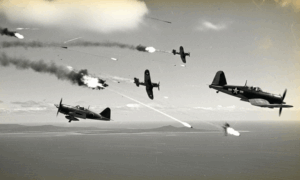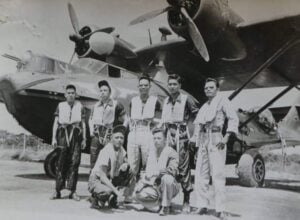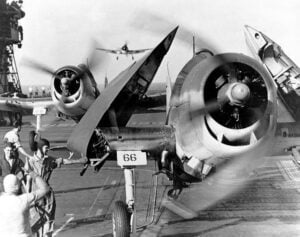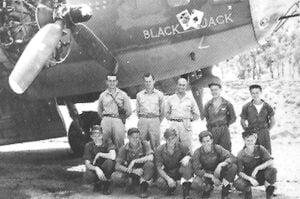The Incredible True Story of the WWII Pilot Who Survived 200 Hits and Lived to Tell It
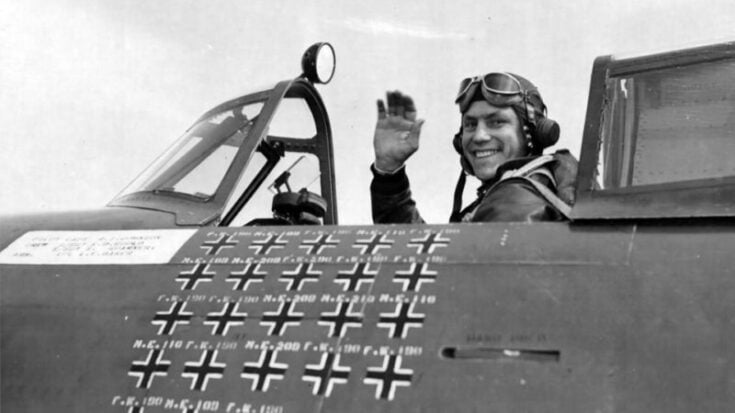
US Army Signal Corps photographer, Public domain, via Wikimedia Commons.
From a Small-Town Dreamer to a Fighter in the Skies
Robert Samuel Johnson was born on February 21, 1920, in Lorton, Oklahoma. From a young age, he was drawn to the sound of engines and the wonder of flight. By the age of 11, he had already taken his first solo flight, paying for lessons with money earned from odd jobs at a woodworking shop. By 12, he had logged 35 hours in the air—an extraordinary feat for a boy who could barely see over the cockpit.
As he grew older, Johnson’s focus shifted to everyday life—sports, friends, and work—but his fascination with the skies never faded. When war broke out in 1941, he enlisted in the U.S. Army Air Forces, first training as a bomber pilot before switching to fighters. That decision would shape his destiny. He was soon flying the Republic P-47 Thunderbolt, a massive single-engine fighter known for its strength and power.
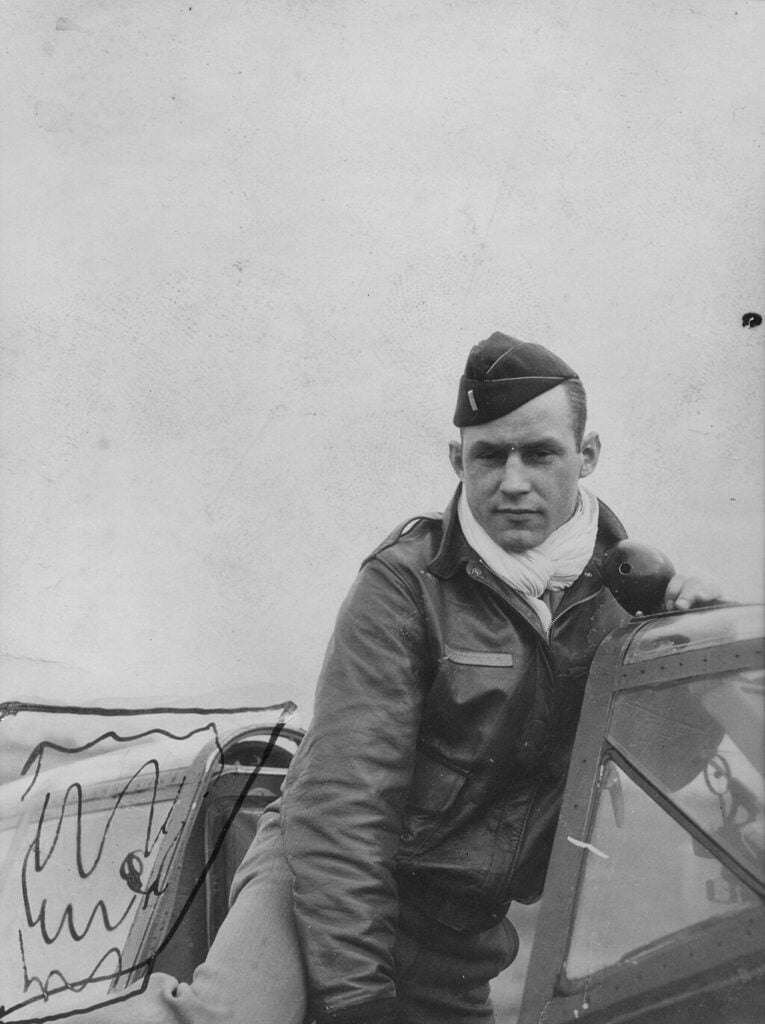
The Thunderbolt: A “Flying Tank” in the European Theater
By 1943, Johnson was a lieutenant with the 56th Fighter Group stationed in England. His missions included escorting heavy bombers across hostile skies over Europe. His aircraft, a P-47 named Half Pint, would become one of the most famous planes of the war. Johnson’s first aerial victory came on June 13, 1943, when he shot down a German Focke-Wulf 190. But the real test came less than two weeks later—one that would push both man and machine to their limits.
On June 26, 1943, Johnson’s squadron of 48 Thunderbolts was escorting bombers returning from a raid near Paris. Johnson flew at the back of the formation, a vulnerable position. Suddenly, sixteen German Focke-Wulfs dived from above, their cannons and machine guns blazing. Johnson’s aircraft was hit almost instantly.
The Day Half Pint Refused to Die
His plane was riddled with over 200 bullets and 21 cannon shells. The canopy shattered, oil sprayed across his face, and flames erupted inside the cockpit. His hands and legs burned, and shrapnel wounds bled freely. The hydraulic system was destroyed, leaving him unable to move the canopy. With no way to bail out, Johnson was trapped.
In desperation, he dove steeply, using the airflow to extinguish the flames and somehow coaxed his crippled engine back to life. But as he limped toward the English Channel, one German fighter stayed on him. The enemy pilot fired repeatedly, unable to believe that the Thunderbolt could still fly. At one point, the German flew alongside, looked over in disbelief, and saluted before flying away—his ammunition exhausted. Many believe that pilot may have been Luftwaffe ace Egon Mayer, though others claim Johnson may have received unseen help from a fellow American pilot.
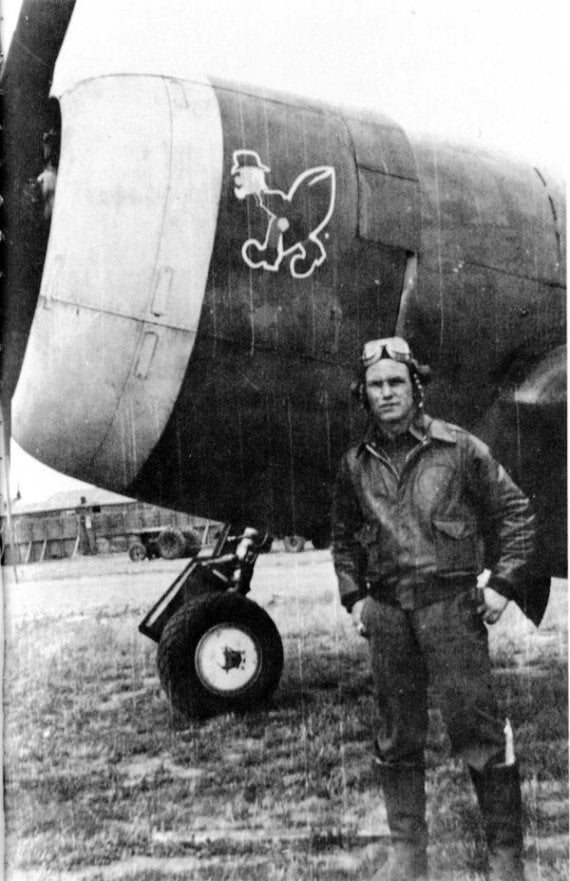
The Indestructible Thunderbolt
The reason Johnson survived lay in the design of his plane. The P-47 Thunderbolt, nicknamed “Jug,” was one of the most rugged aircraft ever built. Powered by a massive Pratt & Whitney R-2800 radial engine producing 2,000 horsepower, it could absorb punishment that would destroy most fighters. Its air-cooled engine was resistant to damage, and thick armor protected the cockpit and vital systems. Even with control cables cut, Johnson managed to guide the plane using trim tabs and whatever control he could muster.
His return to base that day stunned his squadron. The aircraft was barely holding together, and yet it had carried him home. The engineers counted hundreds of bullet holes, but the machine had endured.
Back to the Skies and Beyond
Just five days after the ordeal, Johnson was flying again. He earned the Purple Heart and continued his missions, eventually achieving 27 confirmed aerial victories by May 1944—surpassing the record of America’s top World War I ace, Eddie Rickenbacker. Johnson became one of the leading American fighter aces in Europe.
After the war, he toured factories to boost morale and later worked as a test pilot for Republic Aviation. His story was shared with the world in the 1958 book Thunderbolt, which he co-authored with Martin Caidin. Johnson continued to serve in veterans’ organizations and helped preserve the memory of his fellow pilots.

A Legacy Etched in Aviation History
Robert Johnson’s survival became one of the most extraordinary stories of aerial warfare. His courage and the strength of the Thunderbolt symbolized the resilience of those who fought in the skies of Europe. He passed away on December 27, 1998, and was laid to rest with full military honors, including a missing man formation of F-16s overhead.
His story remains a powerful reminder of endurance, skill, and the human will to live—even when the odds seem impossible.













